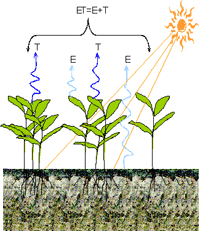Agricultural Research Division of IANR

West Central Research and Extension Center, North Platte
Date of this Version
7-2009
Citation
Published in Biocontrol Science and Technology, Vol. 19, No. 6, July 2009, pp 613–625. doi 10.1080/09583150902968972
Abstract
Despite the reported specificity of Bacillus thuringiensis proteins against target pests, a number of studies have indicated that the uptake of Bt-endotoxins from bioengineered crops could have negative effects on natural enemies. It is therefore essential to quantify exposure pathways in non-target arthropod food webs across multiple transgenic events. Adult ground beetles (Coleoptera: Carabidae) were collected from transgenic corn fields expressing lepidopteran-specific Cry1Ab, coleopteran-specific Cry3Bb1, and both Cry1Ab and Cry3Bb1 (stacked event), as well as a non-transgenic isoline. Carabid gut-contents were screened for Cry1Ab Bt-endotoxin using enzyme-linked immunosorbent assay. Significant numbers of carabids tested positive for Cry1Ab from the lepidopteran-specific field: Harpalus pensylvanicus (39%, 25 of 64), Stenolophus comma (4%, 6 of 136), Cratacanthus dubius (50%, 1 of 2), Clivina bipustulata (50%, 1 of 2), and Cyclotrachelus sodalis (20%, 1 of 5). The highest proportion of Bt-endotoxin uptake was 4–6 weeks postanthesis. Only one species, H. pensylvanicus (5%, 4 of 75), screened positive for Cry1Ab from the stacked line, despite similar expression of this endotoxin in plant tissue harvested from both lines. This difference in Cry1Ab uptake could be due to changes in the non-target food web or differential rates of Bt-endotoxin decay between genetic events. This study has quantified the differential uptake of Cry1Ab Bt-endotoxin by the carabid community across multiple transgenic events, thus forming the framework for future risk-assessment of transgenic crops.
Included in
Agriculture Commons, Ecology and Evolutionary Biology Commons, Entomology Commons, Plant Sciences Commons


Comments
Copyright © 2009 Taylor & Francis. Used by permission.